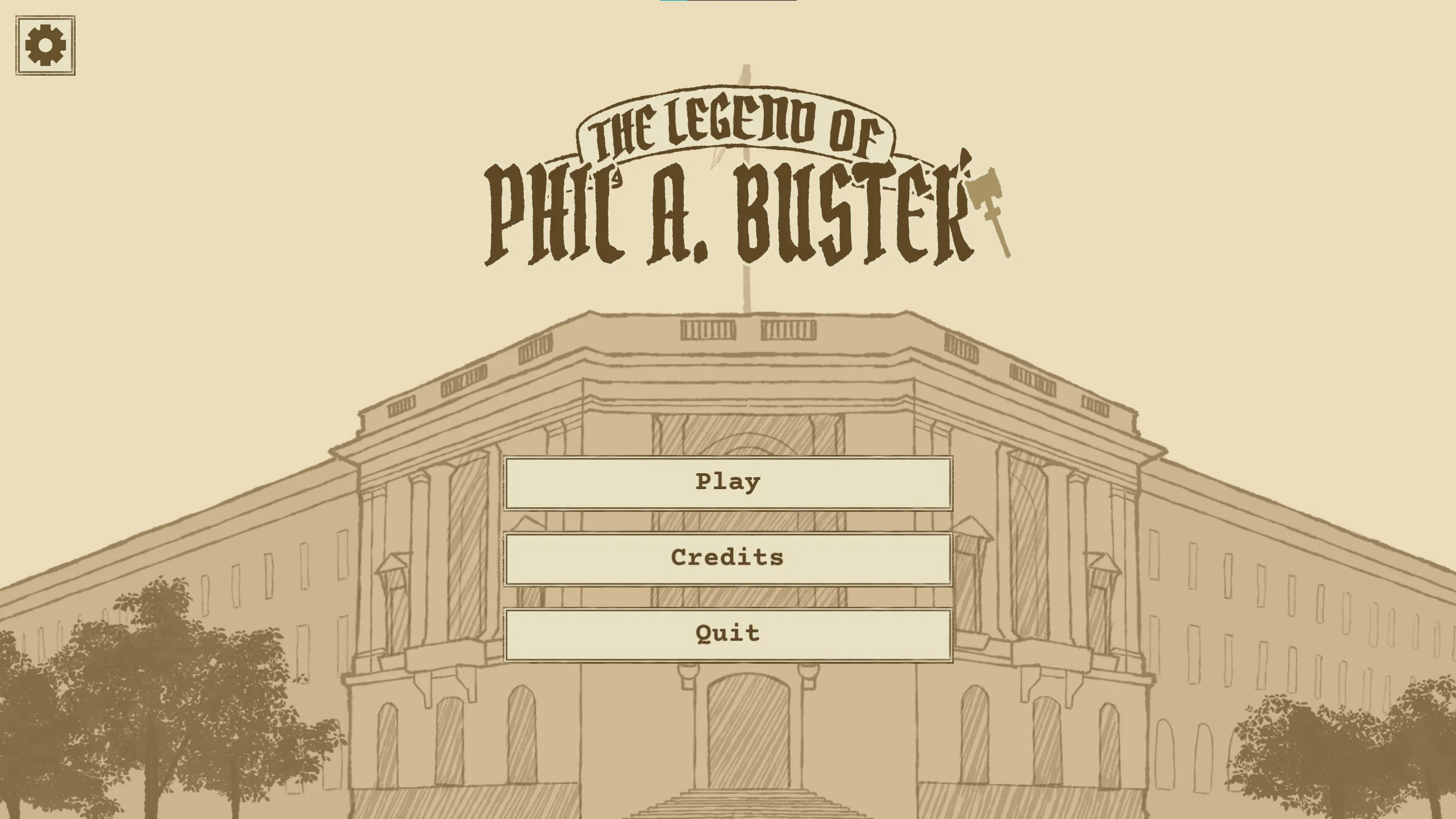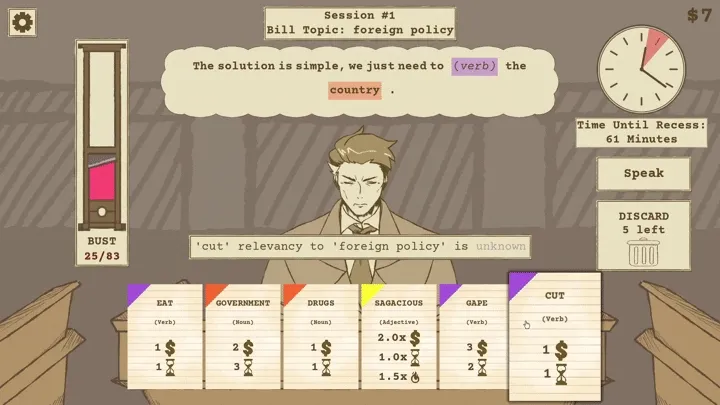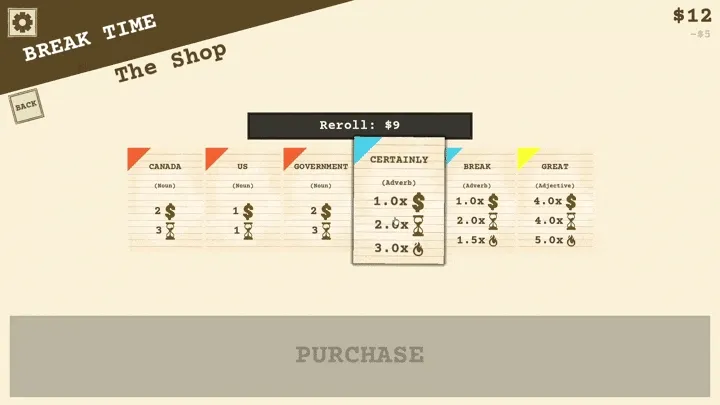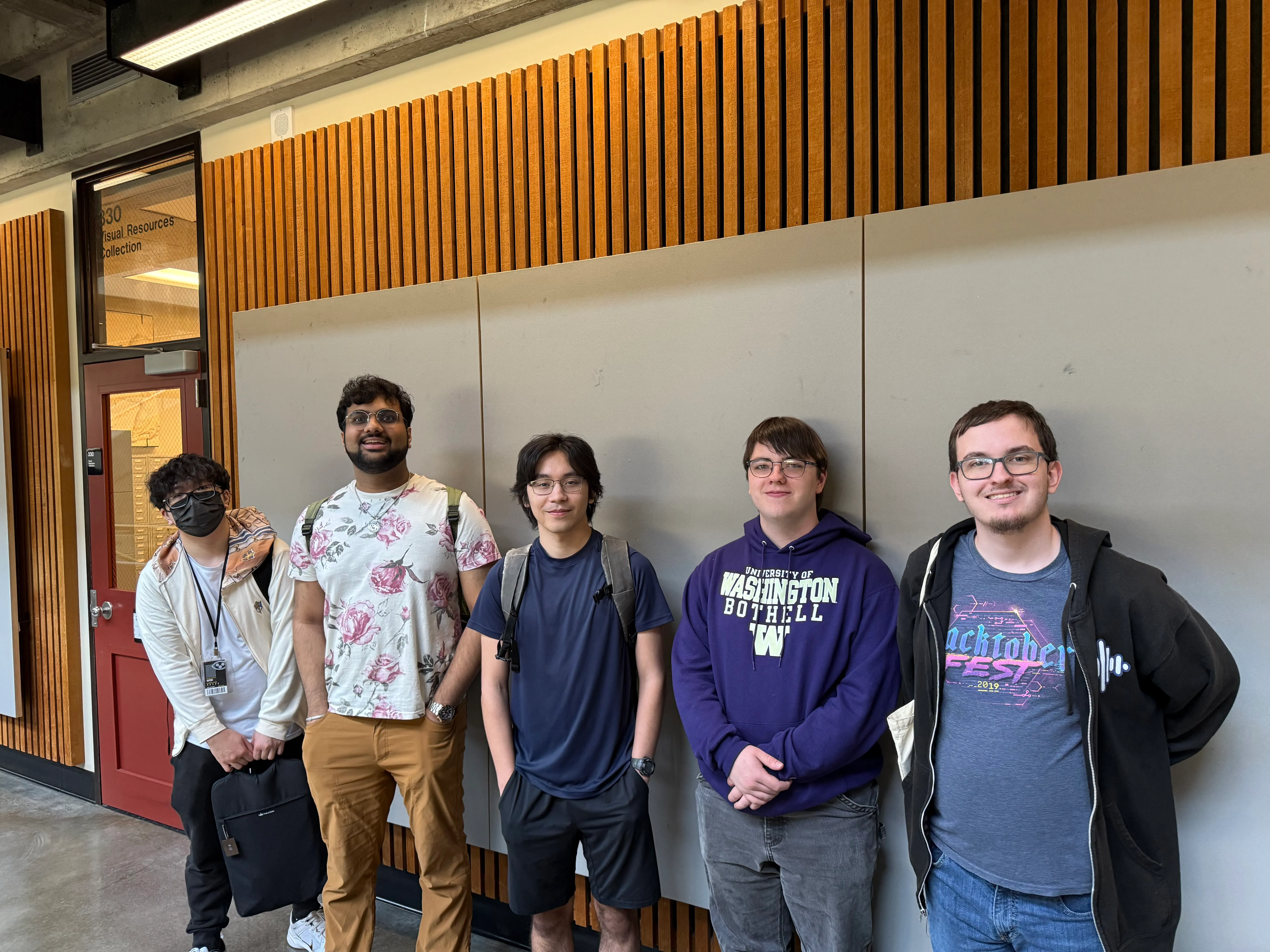
I was fortunate enough to participate in the second Tri-Campus Game Jam hosted by the University of Washington. This jam presented an exciting challenge: create an innovative game that would showcase our team’s creativity and technical skills within the academic game development community. The theme of delay the inevitable and constraints of the jam pushed us to explore unusual game mechanics and narrative approaches.
The Legend of Phil A. Buster emerged from our desire to combine two seemingly incompatible concepts: the strategic depth of deckbuilding games and the linguistic creativity of mad-lib. We envisioned a roguelike experience where players build their deck while comedically filibusting Congress through wacky, nonsensical sentences.
Our goal was to create a game that would surprise players with its unique approach to familiar genres while demonstrating innovative design thinking and technical execution within the jam’s timeframe.

Primary Technologies:
Innovative Systems Developed:
Rationale Behind Technology Choices: Godot’s flexible architecture made it ideal for experimenting with novel game mechanics that don’t fit traditional genre templates. The engine’s scene system allowed us to create modular components that could be combined in unexpected ways, supporting our experimental approach to game design.

Genre Fusion Complexity:
Technical Implementation Challenges:
Academic Competition Considerations:
![Screenshot of a nonsensical sentence by a player - "The [government] is taking over. We must [kill] immediately!"](/_astro/philbuster3.2mFNJOy6_1ih9it.webp)
Experimental Game Design: Developing The Legend of Phil A. Buster taught valuable lessons about pushing genre boundaries and creating novel player experiences. The challenge of combining deckbuilding with mad-lib storytelling forced us to think creatively about how different game systems can interact and enhance each other.
Technical Problem Solving:
Academic Game Development:

The Legend of Phil A. Buster won the 2nd Tri-Campus Game Jam overall to very positive reception from everyone involved.
Educational Impact: The success of The Legend of Phil A. Buster demonstrates the value of experimental thinking in game design and the potential for academic game jams to foster genuine innovation. The project serves as an example of how traditional game genres can be reimagined through creative mechanical fusion.
Future Applications: The narrative-mechanical integration techniques developed for this project have applications in educational games, interactive fiction, and other experimental game design contexts. The technical solutions for dynamic content generation continue to influence approaches to procedural storytelling in games.